Overview
The article serves as an authoritative guide on obtaining pricing for land archive management software, highlighting essential factors such as:
- Features
- User licenses
- Support
- Deployment models
- Customization
It presents a systematic approach to researching options, requesting quotes from vendors, and evaluating those quotes. This ensures that organizations can make informed decisions that align with their operational needs and budget, ultimately enhancing their archive management capabilities.
Introduction
Real estate professionals are increasingly acknowledging the critical role of efficient document management in navigating the complexities of land ownership and transactions. The appropriate land archive management software not only streamlines the organization of essential records but also enhances decision-making processes, ultimately conserving time and resources.
However, with a plethora of options available, how can one effectively identify the optimal solution while adhering to budgetary constraints? This guide explores the essential steps for obtaining pricing, evaluating features, and making informed decisions in the realm of land archive management software.
Understand Land Archive Management Software
Real estate experts seeking to streamline the management and organization of land-related documents should get pricing for land archive management software, as land archive tools are essential for this purpose. This application encompasses critical features such as document storage, retrieval, and oversight of land records, which are vital for verifying property ownership, and provides a way to get pricing for land archive management software.
By harnessing these capabilities, real estate professionals can drastically reduce the time and effort involved in managing land records and can also get pricing for land archive management software. This efficiency not only but also fosters informed decision-making in property transactions.
Furthermore, industry leaders underscore that effective document organization is crucial for navigating the complexities of real estate, ensuring compliance, and facilitating smoother transactions.
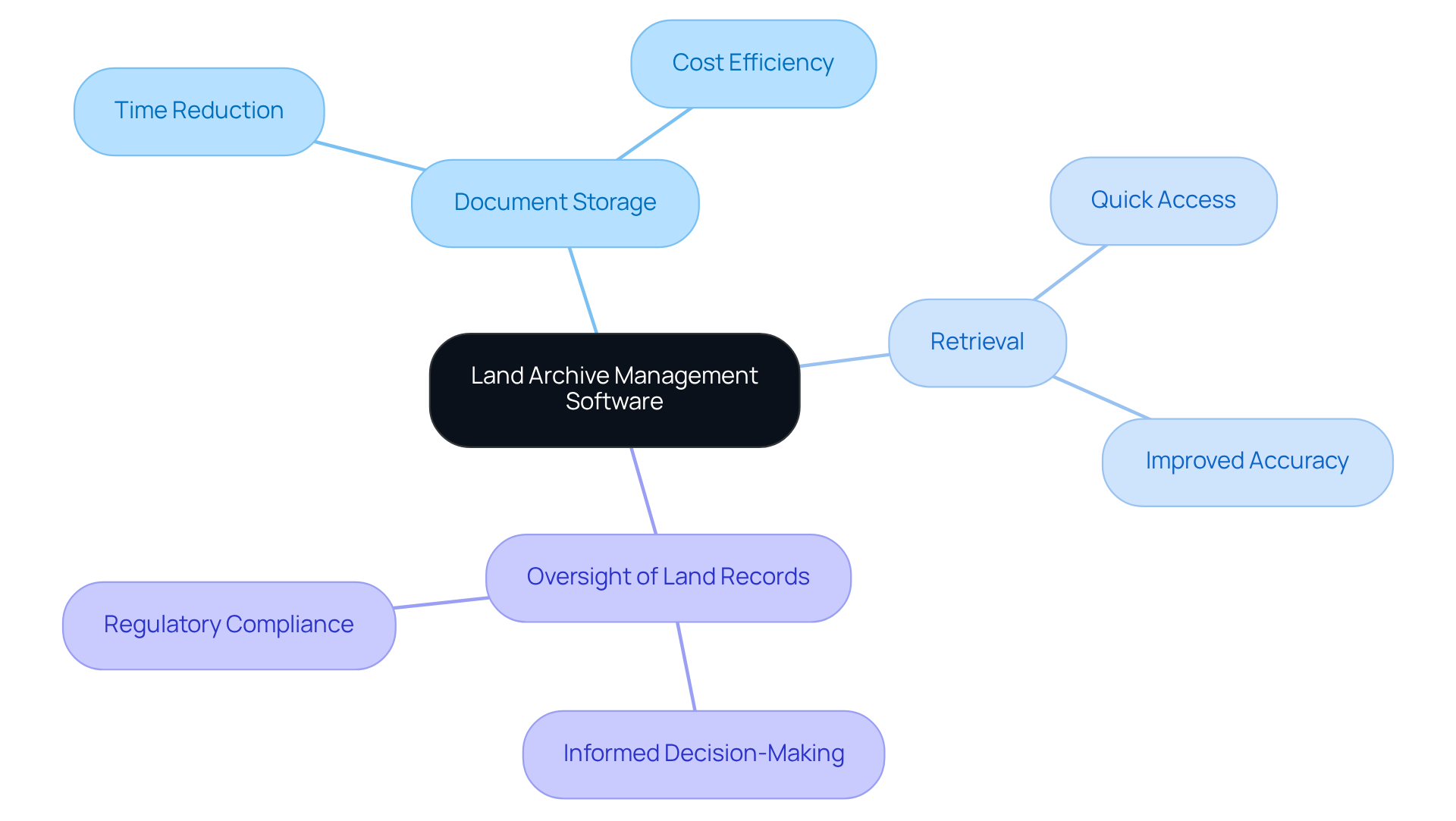
Identify Key Pricing Factors
When evaluating land archive management software, several critical pricing factors must be considered:
- Features: The range of functionalities, including document management, reporting tools, and integration capabilities, significantly influences costs. Sophisticated attributes such as automated workflows and analytics can increase expenses; however, they also enhance operational efficiency.
- User Licenses: Pricing structures often vary based on the number of users or licenses required. Numerous vendors adopt tiered pricing structures, where charges decrease per user as the number of licenses increases. Therefore, it is crucial to evaluate your organization's size and specific requirements.
- Support and Maintenance: Ongoing support and software updates are essential for ensuring smooth operations. These services can incur additional expenses, making it vital to incorporate them into your overall budget planning.
- Deployment Model: The choice between cloud-based and on-premise solutions significantly impacts pricing. Cloud solutions typically operate on a subscription model, which may reduce initial expenses but could lead to greater long-term costs depending on usage.
- Customization: Tailoring the system to meet specific organizational needs can result in increased costs. The complexity involved in the customization process often dictates the final price, highlighting the importance of assessing how much customization is necessary for your operations.
Comprehending these elements will empower organizations to make informed decisions when selecting land archive systems and to get pricing for land archive management software, ensuring they choose a solution that aligns with both their budget and operational requirements.
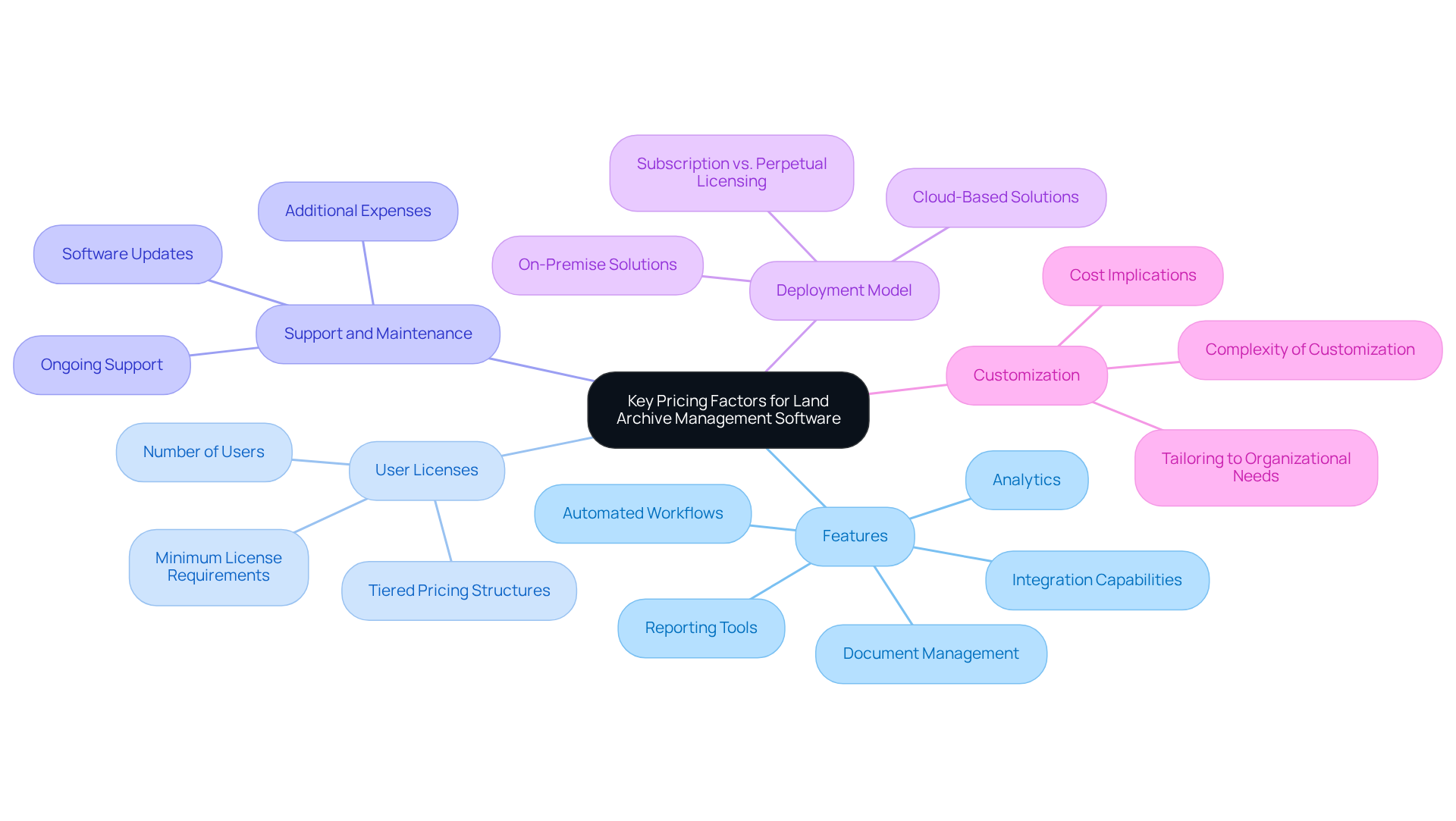
Research Available Software Options
To effectively research available land archive management software options, consider the following steps:
- Utilize Application Comparison Websites: Platforms such as Capterra and SoftwareWorld present comprehensive lists and comparisons of , complete with user reviews and ratings.
- Read User Reviews: Seek feedback from current users to assess the program's performance, ease of use, and customer support. User feedback is pivotal in the decision-making process, revealing practical advantages or drawbacks that may not be apparent from vendor information alone.
- Explore vendor websites to get pricing for land archive management software while also gaining insights into their offerings and features. This exploration will assist in identifying which solutions best align with your specific needs.
- Request Demos: Many application providers offer free demos or trials. Leverage these opportunities to evaluate the program's usability and functionality firsthand, ensuring it meets your expectations before making a commitment.
- Consult Industry Peers: Engage with colleagues or industry forums to gather recommendations and insights regarding the best technology solutions available. Peer feedback often provides valuable perspectives on application performance and reliability.
- Consider Data Security and Implementation Expenses: Remain vigilant about potential data protection issues and the significant implementation expenses associated with certain technological solutions. Evaluating these factors will empower you to make a more informed decision.
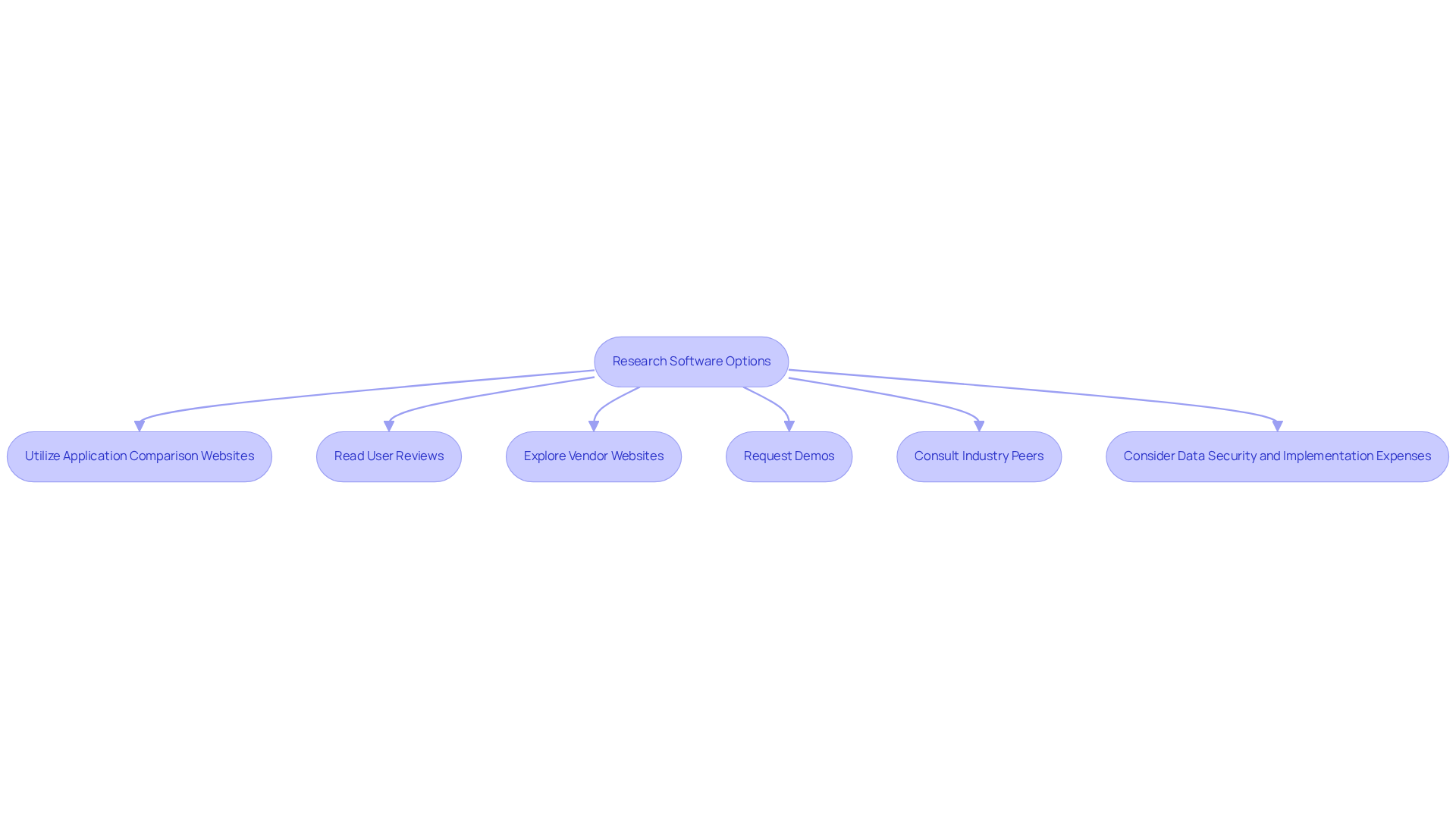
Request Quotes from Software Vendors
Once you have identified potential software options, the next step is to get pricing for land archive management software from the vendors. Here’s how to do it effectively:
- Prepare a Request for Proposal (RFP): Clearly outline your specific needs, including the number of users, required features, and any customization requests. A well-defined RFP significantly enhances the effectiveness of your procurement process, as organizations that utilize structured frameworks for RFPs tend to achieve higher success rates.
- Contact Multiple Vendors: Reach out to several vendors to compare quotes and ensure a range of options. Involving various suppliers can result in improved rates and service options, as competition frequently reduces expenses.
- Ask for Detailed Pricing: Request a comprehensive breakdown of costs, including any additional fees for support, maintenance, or upgrades. Clarity in costs is essential, enabling precise budget planning and avoiding unforeseen expenses.
- Inquire About Discounts: Don’t hesitate to ask if there are any discounts available for long-term commitments or bulk licenses. Numerous sellers are open to discussing costs, particularly for larger agreements, which can result in considerable savings.
- Set a Deadline for Responses: Establish a from vendors. This keeps the process moving and encourages timely responses, which is essential in maintaining momentum in procurement activities. Research indicates that 33% of organizations report meeting deadlines as a challenge in RFP responses, highlighting the importance of this step.
By following these best practices, you can enhance your chances of securing favorable quotes and get pricing for land archive management software while also establishing effective vendor relationships. As Rodri, a procurement specialist, states, "Managing sales quotes is a big part of any business; it helps generate revenue by converting customers.
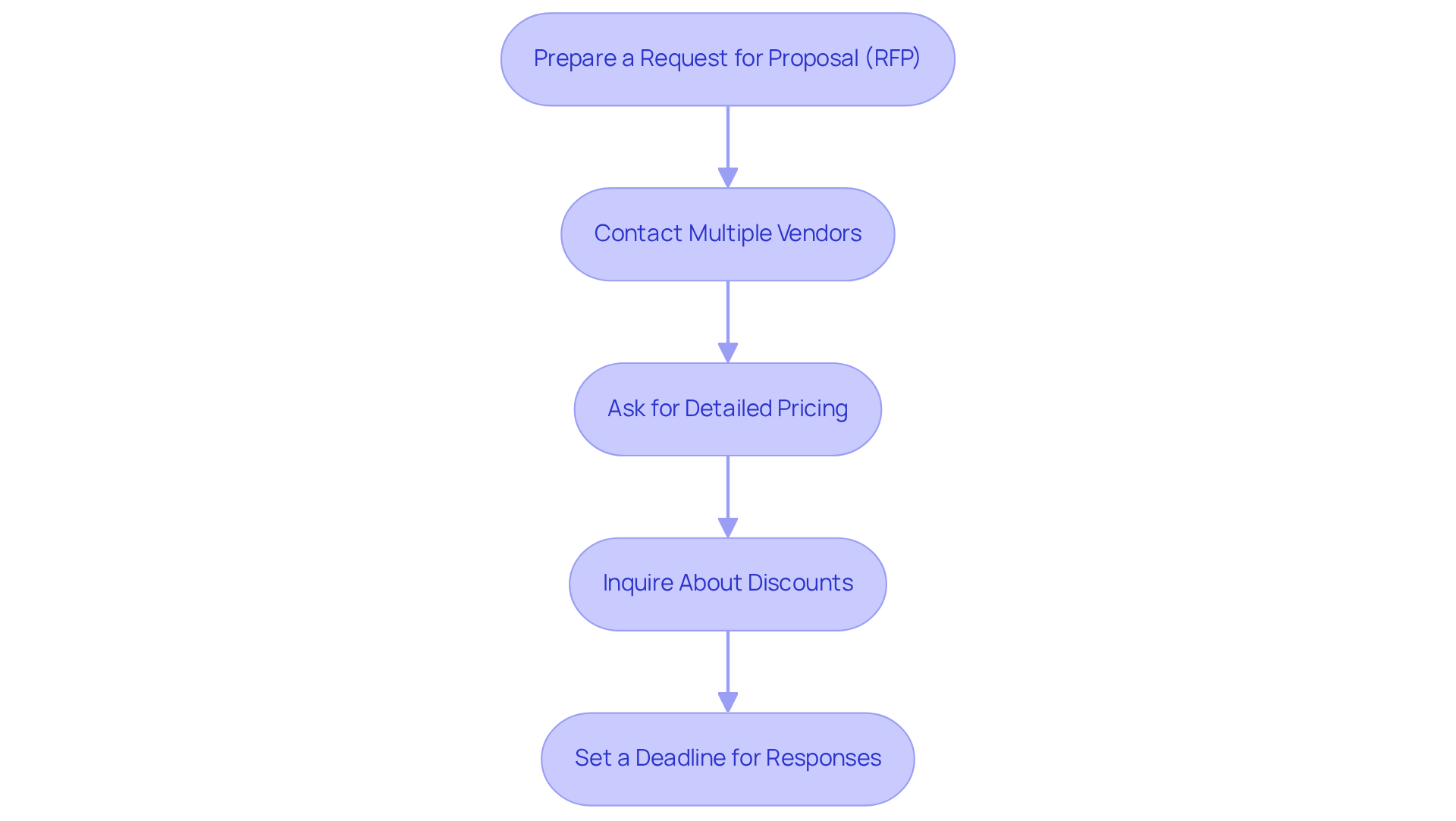
Evaluate and Compare Quotes
After receiving quotes from various vendors, it is essential to evaluate and compare them:
- Create a Comparison Chart: Compile key features and support options of each software while also including how to get pricing for land archive management software for straightforward comparison. Tools like Excel or can be particularly useful for this purpose. This visual representation aids in identifying strengths and weaknesses at a glance.
- Assess Value for Money: Evaluate not only the price but also the features and support included in each quote to get pricing for land archive management software. Consider the four key dimensions of value for money: Economy, Efficiency, Effectiveness, and Equity. An increased price might be warranted by better functionality or improved customer support, in accordance with the notion that value for money includes both expense and quality.
- Check for Hidden Costs: Scrutinize the quotes for any additional fees that may not be immediately apparent, such as setup fees or charges for extra users. Understanding the total cost of ownership is crucial for informed decision-making.
- Read the Fine Print: Carefully review the terms of service, including cancellation policies and warranty information. This diligence helps avoid unexpected issues down the line.
- Consult with Your Team: Engage relevant stakeholders in the evaluation process to gather diverse perspectives. This collaborative approach ensures that the selected software aligns with the organization's needs and strategic goals, allowing for a balanced judgment of both financial and non-financial factors.
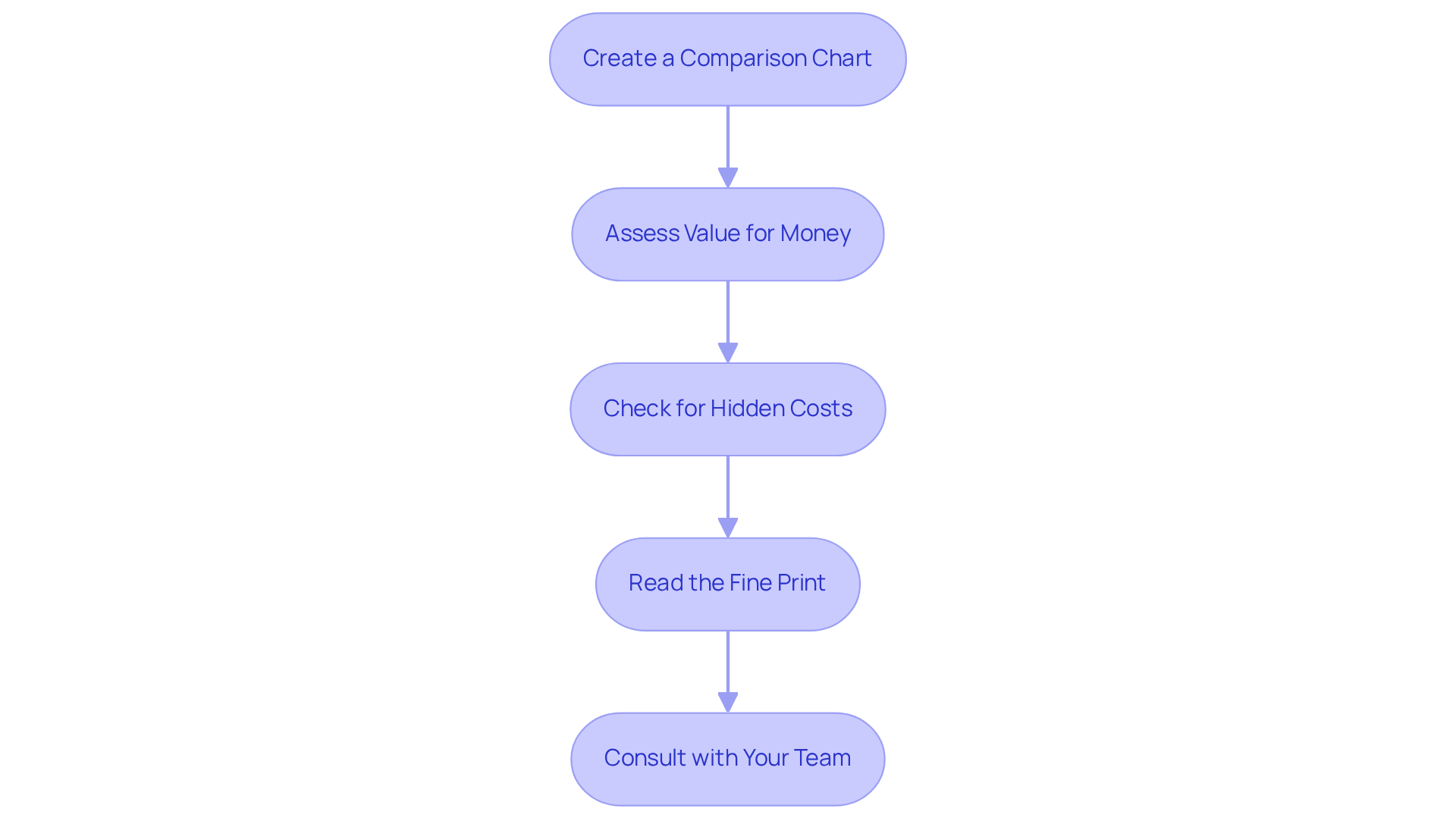
Conclusion
Understanding the intricacies of land archive management software pricing is essential for real estate professionals aiming to enhance operational efficiency. This guide outlines a systematic approach to obtaining and evaluating pricing information, ensuring that organizations can make informed decisions that align with their specific needs and budgets.
Key factors influencing the cost of land archive management software include:
- The range of features
- User licenses
- Ongoing support
- Deployment models
- Customization requirements
By carefully considering these elements, professionals can navigate the software landscape with confidence, selecting solutions that not only streamline document management but also drive informed decision-making in property transactions.
Ultimately, investing in the right land archive management software can yield significant returns in productivity and compliance. As the real estate market evolves, leveraging such technology becomes increasingly vital. Therefore, taking the time to research, request quotes, and compare options is not merely a procedural step; it is a strategic move that can shape the success of real estate operations. Embrace these insights to enhance your organization's document management capabilities and maintain a competitive edge.
Frequently Asked Questions
What is land archive management software?
Land archive management software is a tool designed for real estate professionals to manage and organize land-related documents, including document storage, retrieval, and oversight of land records, which are essential for verifying property ownership.
How does land archive management software benefit real estate professionals?
It helps streamline the management of land records, drastically reducing the time and effort involved, optimizing workflows, and fostering informed decision-making in property transactions.
What are the key pricing factors to consider when evaluating land archive management software?
Key pricing factors include features, user licenses, support and maintenance, deployment model, and customization needs.
How do features influence the pricing of land archive management software?
The range of functionalities, such as document management and reporting tools, impacts costs. More sophisticated features like automated workflows and analytics can increase expenses but also enhance operational efficiency.
What role do user licenses play in the pricing structure?
Pricing often varies based on the number of users or licenses required, with many vendors offering tiered pricing structures where costs decrease per user as the number of licenses increases.
Why is support and maintenance important in the pricing of land archive management software?
Ongoing support and software updates are essential for smooth operations and can incur additional expenses, so they should be included in the overall budget planning.
How does the deployment model affect the pricing?
The choice between cloud-based and on-premise solutions impacts pricing, as cloud solutions typically follow a subscription model, which may lower initial costs but could lead to higher long-term expenses depending on usage.
What is the impact of customization on the pricing of land archive management software?
Customizing the system to meet specific organizational needs can increase costs, as the complexity of the customization process often dictates the final price. It's important to assess the level of customization required for operations.




